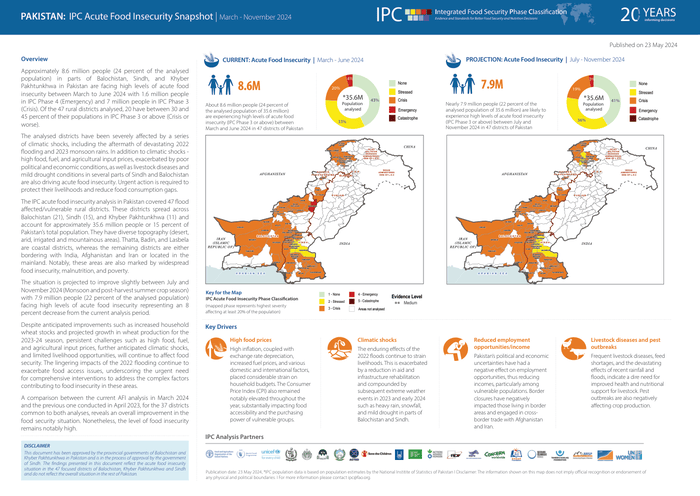Approximately 8.6 million people (24% of the analyzed population) in parts of Balochistan, Sindh and Khyber Pakhtunkhwa provinces in Pakistan are facing high levels of acute food insecurity from March to June 2024, with 1.6 million in IPC Phases 4 (Emergency) and 7, and 1 million in IPC Phase 3 (Crisis). Of the 47 rural districts analyzed, 20 districts have 30-45 percent of the population in IPC Phase 3 or above (Crisis or above).
The analyzed districts have been severely affected by a series of climatic shocks, including devastating floods in 2022 and the aftermath of poor monsoon rains in 2023. In addition to climate change, livestock diseases and mild drought in several parts of Sindh and Balochistan provinces, exacerbated by high food, fuel and agricultural input prices and poor political and economic conditions, have also led to severe food insecurity. Urgent action is needed to protect their livelihoods and reduce food consumption disparities.
IPC’s acute food insecurity analysis in Pakistan covers 47 flood-affected/vulnerable rural districts across Balochistan (21), Sindh (15) and Khyber Pakhtunkhwa (11), accounting for approximately 35.6 million people or 15% of Pakistan’s total population.
The situation is expected to improve slightly from July to November 2024 (monsoon season and post-harvest summer crop season), with 7.9 million people (22% of the analyzed population) facing severe food insecurity. This represents a decrease of 8% from the current analysis period.

